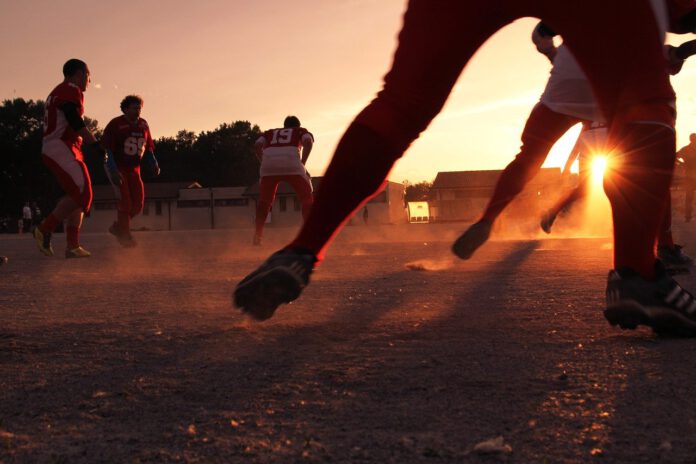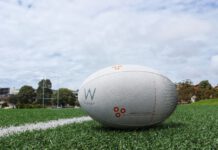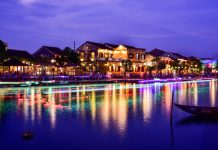Before Europeans arrived in New Zealand, the Māori were playing a ball game called ki-o-rahi which greatly resembled Australian Rules Football and rugby football. It has been suggested that this may have influenced New Zealand playing styles, especially amongst the indigenous population.
Various codes of football were played in New Zealand in the years following white settlement. Christchurch Football Club, which is now the oldest rugby club in the country, was founded in 1863. It played by its own rules for many years. Rugby football was first introduced to New Zealand in 1870 by Charles John Monro, son of the then-Speaker of the House of Representatives, David Monro. He encountered the game while studying at Christ’s College Finchley, in East Finchley, London, England, and on his return introduced the game to Nelson College, who played the first rugby union match against Nelson football club on 14 May. A visit to Wellington by Munro later that same year resulted in an organised match between Nelson and Wellington. By the following year, the game had been formalised in Wellington, and subsequently rugby was taken up in Wanganui and Auckland in 1873 and Hamilton in 1874. In 1875 the first representative team was formed, being a combined-clubs Auckland team which toured the South. It is thought that by the mid-1870s, the game had been taken up by the majority of the colony.
The latter stages of the 1870s saw the emergence of a more formal structure, with Unions being formed in both Canterbury and Wellington during 1879. In 1882, the first international rugby side toured New Zealand, a New South Wales side that visited both islands during the latter part of the year. Two years later, a New Zealand team visited New South Wales, wearing blue jerseys with a golden fern. The team won all their games. In 1888, the first ever British Isles rugby team tour took place, visiting New Zealand and Australia. The visitors won all their New Zealand games except for one, losing to Auckland. During 1888-89, the New Zealand Native team became the first from a colony to visit Britain. In 1892 the New Zealand Rugby Football Union (NZRFU), now known as the New Zealand Rugby Union (NZRU), was established, to act as the national governing body of the sport. Following the establishment of the national governing body, the first NZRFU national sanctioned tour was undertaken in 1893, when a ten-game tour of Australia was played. The team was captained by Thomas Ellison.
In 1902, the governor of New Zealand, the fifth Earl of Ranfurly presented a trophy shield to the Auckland side, who were undefeated in provincial competition that year. The shield became known as the Ranfurly Shield. Three years later, a 1905 New Zealand team, who became known as the “Originals”, toured the British Isles and France winning all of their games apart from controversially losing the test against Wales. As the team swept through Britain, some of the players took note of how rugby (league) was being played in the North of England. One player, Aucklander George Smith met with Sydney entrepreneur James J. Giltinan on his way home, and discussed the opportunities of such a game. Meanwhile, New Zealander Albert Henry Baskervill had contacted the Northern Union to arrange a New Zealand tour, as he had just read about the game in the Wellington Post. The NZRFU discouraged any involvement from its players and officials, nonetheless, a team departed a travelled to Sydney first, and were there labelled the All Golds, a play on All Blacks in reference to the player payments. The team went on to tour England. They played an import role in rugby league.
The 1930s saw a period of skill development for rugby in New Zealand. The 1940 All Black tour of South Africa was one of the first sporting events cancelled due to the Second World War. Rugby was however played in services sport, with games being played with South African allies during the North African desert campaign, also, most domestic competitions were suspended during this time. In 1976, the first ever season of the National Provincial Championship (succeeded in 2006 by the Air New Zealand Cup and Heartland Championship) went underway. In its inaugural format, Division One was made up of seven North Island teams and four South Island. The remaining provinces contested a split second division, though South and North teams did not meet each other, instead played their respective Island clubs. There was a separate relegation system in place for each the North and South, ensuring the number of teams from each island.
The 1981 Springbok Tour, or “The Tour”, went down as one of the most controversial rugby tours ever. From July to September, the Springboks toured New Zealand. Rugby fans filled the stadiums, yet equal numbers of fans protested the games outside the stadiums. Police were divided into Red and Blue riot squads for the tour, and in preparation for possible trouble, all spectators were told to assemble in sports grounds at least an hour before kickoff. At a game at Rugby Park in Hamilton, around 350 protesters pulled down a fence and invaded the pitch. Police, already very worried, pulled the match when they found out a light plane piloted by a protester was headed to fly around the stadium. A protest turned violent in Wellington the following week, escalating the situation. During the final test match at Eden Park, a low flying plane dropped flour bombs over the pitch. These images were beamed around the world, and looked as though a civil crisis had engulfed New Zealand. A subsequent 1985 All Black tour was prevented by the High Court, but an unofficial tour took place the following year.










